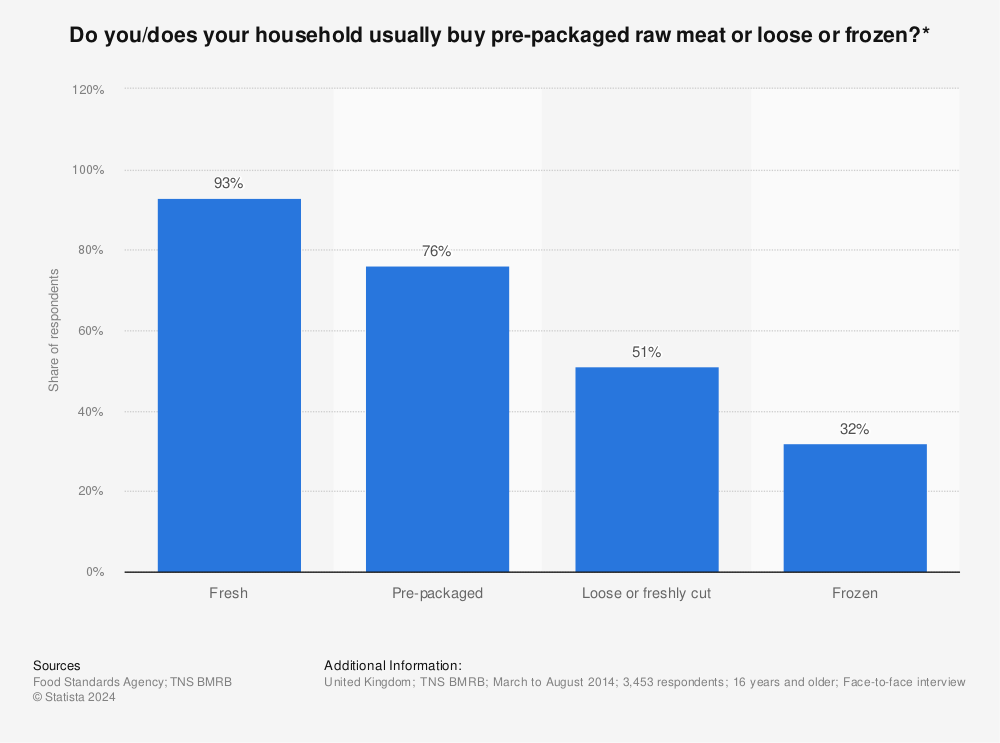The Global Frozen Food Packaging Market is projected to experience a compound annual growth rate of 4.8 percent between 2017 and 2022. The increased demand for reducing food waste and the longer shelf life of frozen foods are the primary factors expected to fuel the growth of this market during the forecasted time period.
Food products that are deeply frozen and can be stored and used for a long period of time are referred to as frozen foods. The most commonly used frozen food products globally include:
- Ready to eat meals
- Fruits
- Vegetables
- Meat
- Poultry
- Seafood
- Soups
Worldwide, the frozen food market is made up of both retain and business consumers. Retail consumers of frozen foods include individuals and households. Business consumers include fast food chains, hotels, caterers and other similar entities that purchase and use frozen foods on a large scale.
Retail consumers tend to prefer purchasing cooked and/or partially cooked ready to eat meals, soups and meats. Business consumers purchase high quantities of frozen meats, sea foods, breads, dough, pizzas, potatoes and other vegetables and use these products as primary ingredients when preparing food for their end customers.
Factors Driving the Global Frozen Food Packaging Market
There are a variety of factors that are expected to fuel the growth of the frozen food packaging market over the forecast period of 2017 and 2022. Of these factors, the largest contributor that is projected to boost sales in this market is the increased demand for higher quality foods that have a longer shelf life and a strong desire to reduce food waste on a global scale.
Factors driving the growth of the market do differ in different regions. For example, in Asia Pacific, the increased consumption of frozen foods in development markets, such as China and India, is expected to aid in the augmentation of the Global Frozen Food Packaging Market. An increase in disposable incomes in this region coupled with changes to lifestyles and eating habits are also projected to boost the growth of the market in Asia Pacific. Furthermore, a surge in the amount of large retail chains that sell frozen foods, including hypermarkets and supermarkets, has reinforced the demand in developing countries in Asia.
In Europe, greater demand for frozen food specialties is expected to contribute to the growth of the Global Frozen Food Packaging Market, particularly in Germany and the United Kingdom. This demand will lead to a greater need for frozen food packaging solutions during the forecasted time period.
In other developed markets, such as North America, the growth of the Frozen Food Packaging Market is projected to continue growing at a moderate pace. In these regions, augmentation is expected to be driven by consumers increased desire for healthier frozen foods.

Find more statistics at Statista
Segmentation of the Global Frozen Food Packaging Market – Products, End Users and Regions
The Global Frozen Food Packaging Market is segmented based on the types of products used, the end user, as well as geography.
Product types include:
- Frozen ready to eat meals
- Meat
- Poultry
- Seafood
- Vegetables
- Fruits
- Potatoes
- Soups
Users include:
- Retail users, which are comprised of individuals and households
- Business users, including the food service industries, such as restaurants, hotel chains and caterers
In regard to regions, the Global Frozen Food Packaging Market is segmented accordingly:
- North America
- Europe
- Asia Pacific
- Latin America
- Middle East
- Africa
North America and Europe are the largest developed markets that contribute to the Global Frozen Food Market. Asia Pacific, Latin America, the Middle East and Africa are the largest developing markets that contribute to Global Frozen Food Packaging Market, and these regions are rapidly growing.
Segmentation of the Global Frozen Food Packaging Market – Food Packaging Products
A variety of products are used to package frozen foods across the globe. The most commonly used packaging products include:
- Bags
- Boxes
- Trays
- Wraps
- Pouches
- Tubs
- Cups
At the present time, boxes are used the most widely used packaging material in the Frozen Food Packaging Market across the globe. During the forecasted time period (2017 to 2022), boxes are expected to continue dominating the materials used for packaging in the Global Frozen Food Packaging Market.
Global Frozen Food Packaging Market – Key Vendors and Competitive Landscape
Several major companies operate in the Global Frozen Food Packaging Market. These companies rely on acquisition and the development of new products as their primary business strategies in order to garner a competitive edge over other players in the market. An increased desire for fresh food products has given way to a massive scope for innovation in regard to packaging products. As such, key players are working fiercely to develop new and innovative packaging methods that will ensure fresh foods retain their quality and hold a long shelf life.
One of the largest contributors to the Global Frozen Food Packaging Market is Aryzta. They supply frozen bakery products to North America and Europe. Nestle is another leading vendor in North America and Europe. This company provides frozen pizza to these regions. In India, Mac Cain Foods is one of the top vendors in the Frozen Food Packaging Market. They have launched food variants local to the area that have been specifically designed to meet the traditional food habits of consumers in this region.
Other key vendors that are currently profiting and expected to continue profiting in the Global Frozen Food Market include:
- General Mills Inc
- Kraft Foods Group Inc
- Ajinomoto Co Inc
- Cargill Incorporated
- JBS SA
- Eurpoastry
- Flower Foods
- Kellogg Company
- Dolco Packaging
- InerFlex Group
- Leucadia National
- Packaging Corporation of America
